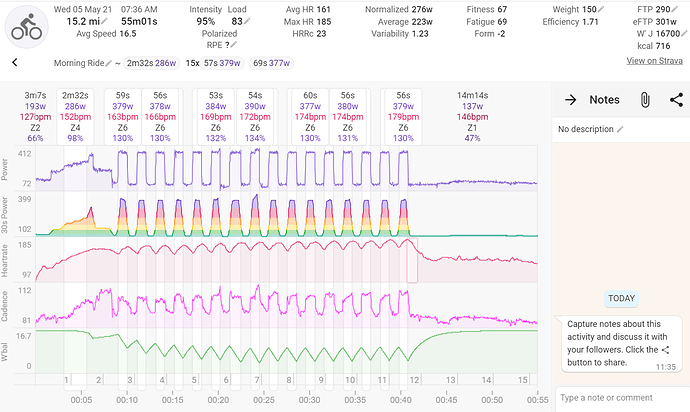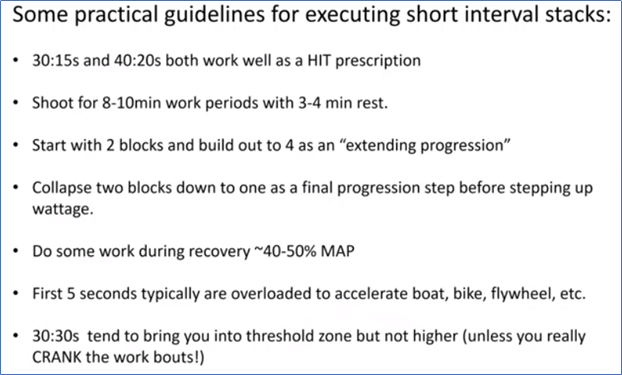Thanks to @TKskate for the question on our 40/20 workout from February! This was a workout that @chris and I did as one of our structured sessions.
Near the end I talk about the HR response and being able to hit a high % of maximum HR. My max is 181 beats, and I peaked at 179 beats near the end of this workout. So looking at the graphs below, we can take a few things away that can be useful for planning your interval sessions:
-
On a workout like this, check on how your HR responds. It can give you clues as to your readiness for the workout and suggest if there is any leftover fatigue, etc. You can see in the graph below how the HR rose relatively quickly and sustained well throughout each interval. This is a good indication that the body was pretty fresh. If HR failed to increase appropriately or took a long time, it would be a good indicator that another rest day is probably best before trying it again.
-
This session was meant to work at >90% HR max. So that HR response helped to achieve ~20 minutes of good quality work to work on that VO2 max. When planning your sessions, start with something achievable (especially for Zone 5 work like this), maybe 8-12 minutes, and then work up from there. You can build your intervals based on the time you want to achieve and then splitting up as necessary to get the time. Remember that there will be some time for HR to achieve that plateau, which is why in this example below you will see 6 minute sets. This actually achieved ~5:30 of time in Zone 5 in the end.
- Erg mode vs. non-erg mode - this one I’m partial to non-erg mode because I like to maintain practice shifting gears to create the power on variable terrain. Chris did a fun test where he performed two sets on erg mode and two sets on non-erg mode. His graph is quite interesting because he was able to maintain his average power (per set) within 5 watts of his erg mode power. This speaks to his ability to pace himself well and know how hard to push. Check out his graph:
- The other point that I noticed with Chris’ session is that while his average power per set remained basically the same, he was hitting higher peak powers on the non-erg mode. You can see a different strategy here - on the second set, he started somewhat below the erg power, but then ramped up a bit higher on intervals 3, 4, and part of 5, before settling back in on the last interval. On the final set of the workout, he had an upward ramping power with a big, strong finish at the end.
Is one better than the other? Of course it depends (everyone’s favorite answer!). What I’ll suggest is that if you compare our graphs, you can see that I start out hard and then settle in over the course of the workout with a strong final set. Chris, having the ability to experience even pacing during half of the workout from the computer controlling his power, is able to finish strong. So depending on how well you know your body and can pace during high-intensity efforts, one or the other may be optimal for you.
Do you “peak and fade” typically? Maybe erg mode can help you better sustain an appropriate power to maintain consistently high power, and keep enough in the tank for the end of your event.
Do you tend to finish with a lot in the tank? Non-erg mode can be a great way to push your limits and find the edge. As you explore that, you can improve your pacing and find something deeper that you didn’t know you had.
Let’s hear your thoughts and questions!
Coach Ryan
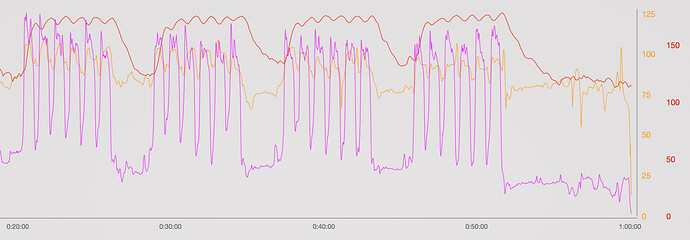
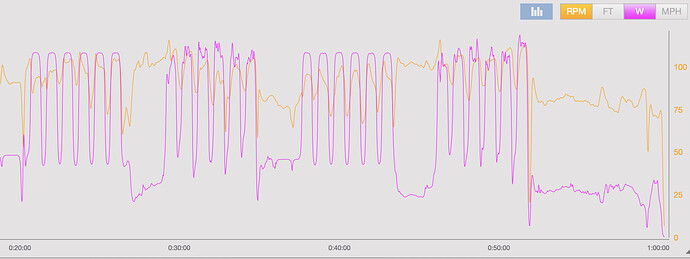
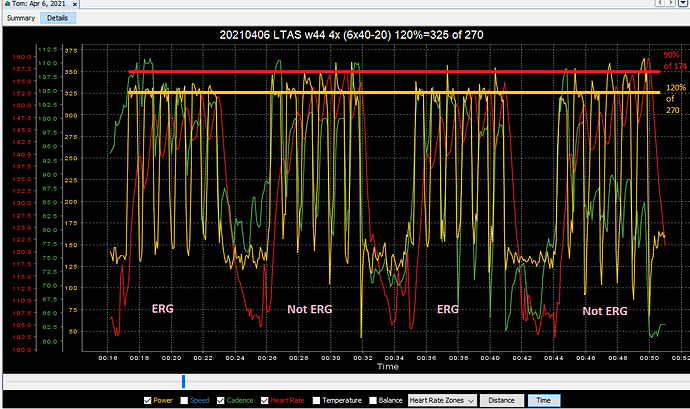
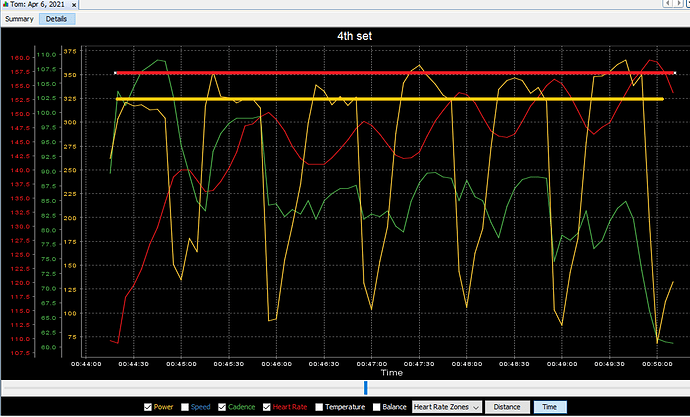

 on Tuesday, but had a training ride with my junior team Tuesday afternoon. I was able to ride - lower intensities felt spectacular, could have ridden like that for days. Although when we did our threshold efforts, the perception of the effort was high, and the HR response was abysmal. Normally I’ll get my HR up to around 158-163 for threshold intervals (max of 178-181 beats depending on recovery), but could barely reach 147 beats yesterday. HRV dropped 25%, and then bounced back to normal today. But during that ride, there was just a complete inability to go hard. It sounds like you have the 2-dose vaccine coming, and I’m not sure how the first dose affects performance, but just something to consider.
on Tuesday, but had a training ride with my junior team Tuesday afternoon. I was able to ride - lower intensities felt spectacular, could have ridden like that for days. Although when we did our threshold efforts, the perception of the effort was high, and the HR response was abysmal. Normally I’ll get my HR up to around 158-163 for threshold intervals (max of 178-181 beats depending on recovery), but could barely reach 147 beats yesterday. HRV dropped 25%, and then bounced back to normal today. But during that ride, there was just a complete inability to go hard. It sounds like you have the 2-dose vaccine coming, and I’m not sure how the first dose affects performance, but just something to consider.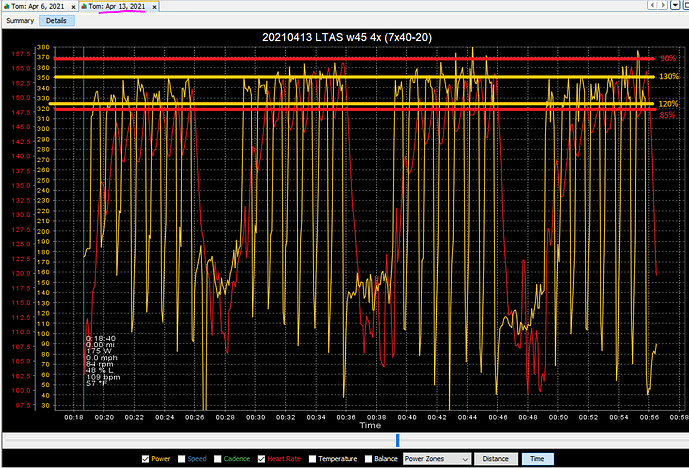
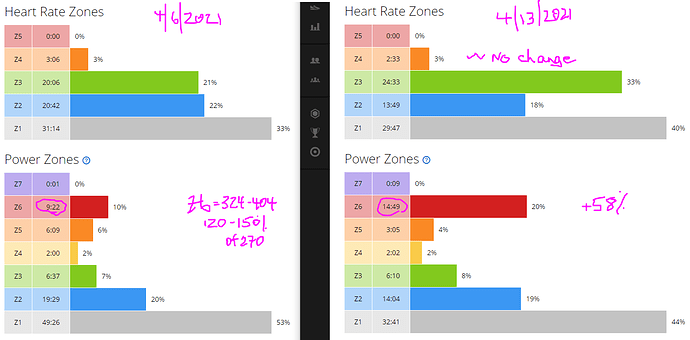

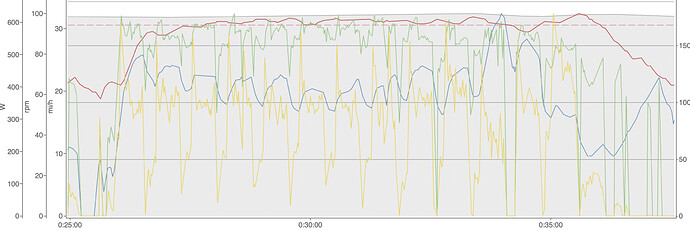
 ). When I got to the top of the hill, my HR was right back up to max, which would support the notion of being able to tolerate the aerobic demand of the workout better now. And as a side note, I was really glad to see that I didn’t lose any top end either (not that a slight loss would mean much with HIE/W’ of 21kJ) and was still able to set a new 5s sprint PR that bests even my 2019-2020 sprint power when I was more “sprinty” and less “aerobic” in my training.
). When I got to the top of the hill, my HR was right back up to max, which would support the notion of being able to tolerate the aerobic demand of the workout better now. And as a side note, I was really glad to see that I didn’t lose any top end either (not that a slight loss would mean much with HIE/W’ of 21kJ) and was still able to set a new 5s sprint PR that bests even my 2019-2020 sprint power when I was more “sprinty” and less “aerobic” in my training.
